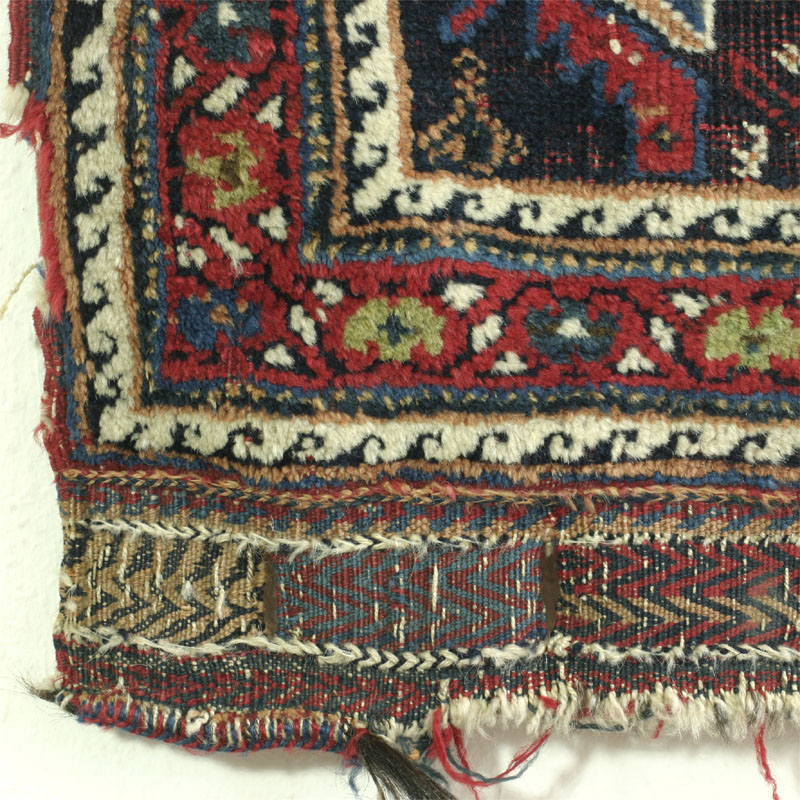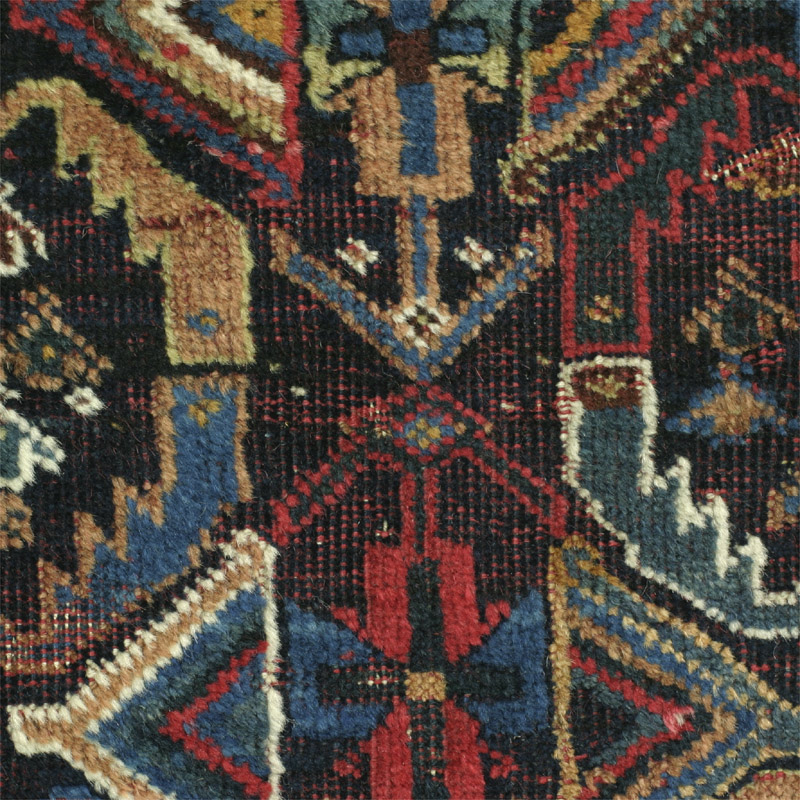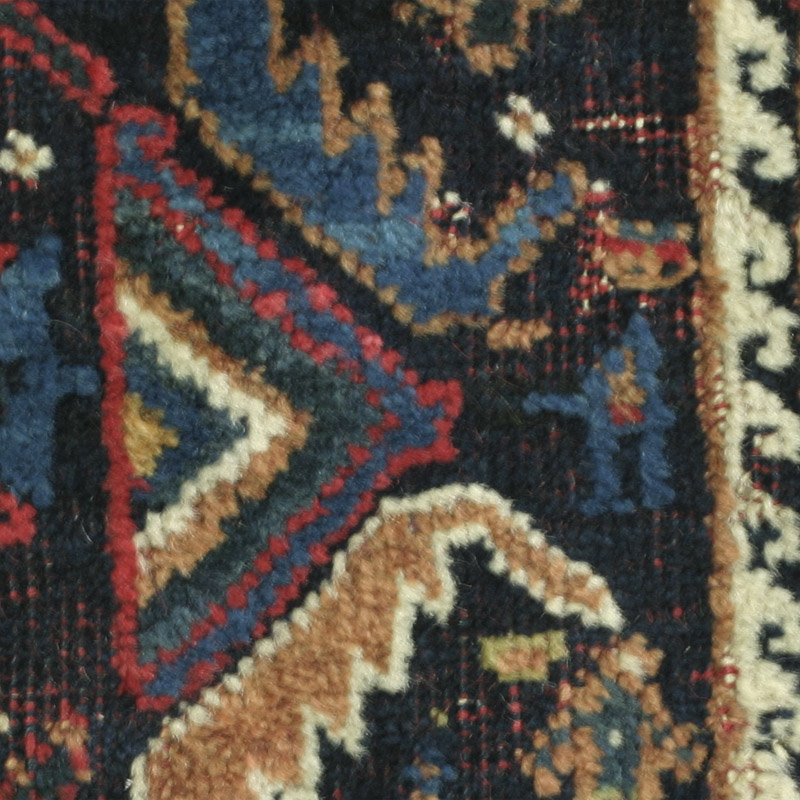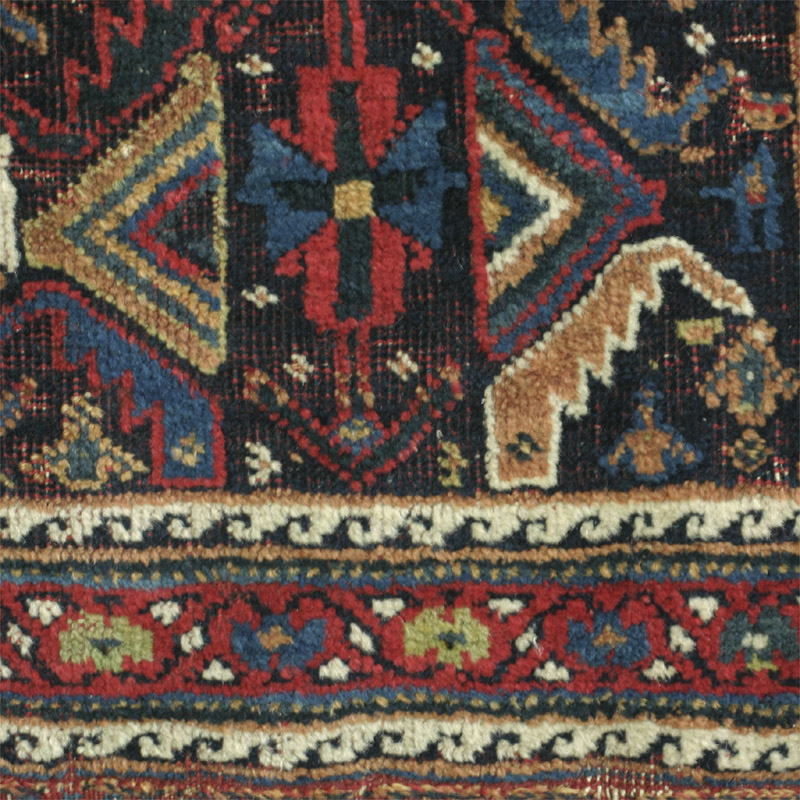This is a saddle bag face (khorjin) of nomadic origin, probably from one of the tribes grouped under the Khamseh confederation. The back is missing but the chevron patterned closing system executed in weft-float brocading is still there.
The bag shows a quite complex repeat design, of compound diamonds that consist in fact of triangles composed of multi-coloured stripes, and a strange vertically extending shield-like device with an inscribed cross and arrow heads pointing upward and downwards. Alongside this pattern with some playful additions and filler motives such as the human figure at the left edge of the field (see close-up image). The serrated leaves framing the negative space left by the compound diamonds seems to suggest that the design could be derived from the Herati pattern seen in old Ferahans and Bijars and also found in so many village and tribal rugs often adapted in ways that bear little resemblance to the 'original' workshop pattern.
The attribution is difficult as with so many south-Persian pieces: while some traits such as the serrated leaves motif and the closing system point to Khamseh work, the off-white warps, ribbed back and use of red wefts is more typical of the Qashqa'i. The flower scroll rosette border is often found in Kurdish work, equally Kurdish seems the kind of compound diamond and the shield-like device with arrowheads. The weave however is asymmetrical which makes a Kurdish attribution unlikely.
The unfaded strong red (no bleeding anywhere) may be synthetic. This is probably not a particularly early piece - I guess it has been woven between 1900-1930.
The khorjin face measures 2ft x 2ft.8in. (61 x 81cm). The weave is semi-depressed. The warps are tightly spun ivory wool with some brown strands, wefts are red wool (appears to be the same wool as used in pile red). Knots are asymmetrical open to the right, h.9, v.8 = 72 kpsi. The weave is very tight and strong, the piece is very flexible but not floppy. The chevron-patterned closing system is don in weft floate brocade technique framed by a line of extra weft wrapping in blue and white. Flat selvages with two cords wrapped in a figure-8 pattern in red wool.
The palette encompasses a strong red, a medium indigo and very dark indigo blue overdyed with black (which is used as field ground colour and shows corrosion), a copper brown-gold, a madder based orange, a mustard yellow-green, two shades of teal green, and white. The strong red may well be synthetic or a mix of synthetic and natural, it is however unfaded and shows no bleeding. The other colours are probably derived from natural dyes.
The Khorjin face is complete apart from a few nibbles in the left selvage /the longest bit missing is about 2 inches) and some loss in the top left corner (see images). The top should better be secured. The dark blue ground is corroded so that the red wefts are visible in parts. Apart form the corroded ground, the pile is quite good, slightly lower towards the centre.




